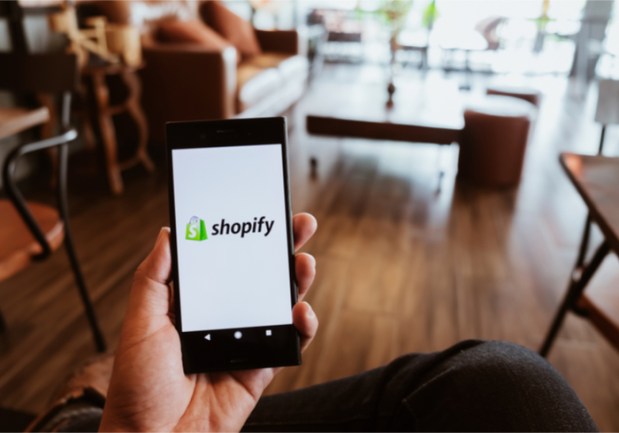Shopify Shares Fall Over Growth Slowdown

Despite a quarter of new product feature announcements and an order volume milestone, shares of Shopify fell more than 6 percent on Thursday (July 31) after the eCommerce platform announced its second-quarter earnings. The stock took a hit due to investor concerns over slowing growth — with 56 percent in gross merchandise volume (GMV) in Q2, compared to 64 percent in Q1.
Investors worry Shopify’s slower growth might indicate that Adobe’s acquisition of eCommerce platform Magento is taking a cut out of Shopify’s business. In May, Adobe entered into a definitive agreement to acquire Magento for $1.68 billion, subject to adjustments. Magento was expected to be added to the suite of digital products Adobe offers its customers, and, combined, they are seen as a competitive threat to Shopify.
At the same time, however, Shopify beat estimates. The firm reported earnings per share (EPS) of $0.02 and revenues of $245 million, compared to analysts’ estimates of a loss of $0.03 per share and $234.6 million. In terms of orders, Shopify Chief Operating Officer Harley Finkelstein said in the company’s post-earnings conference call that the company hit a milestone: The 1 billionth order was placed on the platform. Commenting on the metric, Finkelstein said, “It took us more than 10 years to get to half a billion orders and just a fraction of the time to double it.”
For payments, Shopify rolled out a dynamic checkout that allows customers to quickly check out directly on a product page with their preferred payment method, and allows transactions to happen with a single tap.
“This feature is expected to increase conversions by further reducing friction to complete a sale,” Finkelstein said. (The friction with checkout is that the customer has to enter their shipping data, billing and card information “over and over again, [for] multiple properties.”)
This new feature, along with other initiatives, is aimed at helping merchants sell more and work more efficiently, growing Shopify’s merchant base and expanding the GMV on its platform, Finkelstein said.
Internationally, Shopify launched Shopify Payments in Japan, bringing the total number of countries where the payments platform is available to eight. Additionally, the company announced Fraud Protect for Shopify Payments to provide protection from fraudulent chargebacks.
For brick-and-mortar retail, Shopify debuted enhancements to its point-of-sale (POS) solution, such as Tap and Chip readers, along with upgrades that enable multichannel returns, exchanges and in-store pickup, among other features. In addition, Shopify partnered with Nest following the close of the second quarter, according to its post-earnings press release. Through the tie-up, Shopify merchants can access camera footage via the newly released Store Cam for the Shopify app, as well as purchase Nest Cams and Google Wi-Fi routers directly from the company’s hardware store.
In terms of enterprise retail, the company “knocked it out of the park in Q2” for Shopify Plus. Finkelstein said the company invested in the Shopify Plus product four years ago to increase the flexibility of the platform for high-growth merchants, adding that “the value of these investments is becoming more apparent than ever.”
The company also added larger brands in verticals such as consumer goods, clothing, sports gear and jewelry, in addition to shop launches from consumer packaged goods (CPG) companies. Finkelstein believes Shopify is on track to launch a multi-currency feature later this year for Plus merchants, to allow them to sell in multiple currencies and settle in their local currencies.
The company’s 16,000-plus partners have referred merchants to the platform in the last 12 months, and the number of apps in the App Store have grown to 2,500. Moreover, Finkelstein said the company has noticed that a greater percentage of merchants are paying for apps than a year ago, and per-merchant spending on apps has increased as well.
In all, Finkelstein said the company’s view is that Shopify is more of a retail operating system (OS) than a software suite. In the long-term, he said the company is seeking to build a holistic system to solve challenges entrepreneurs face while launching and running their businesses.
